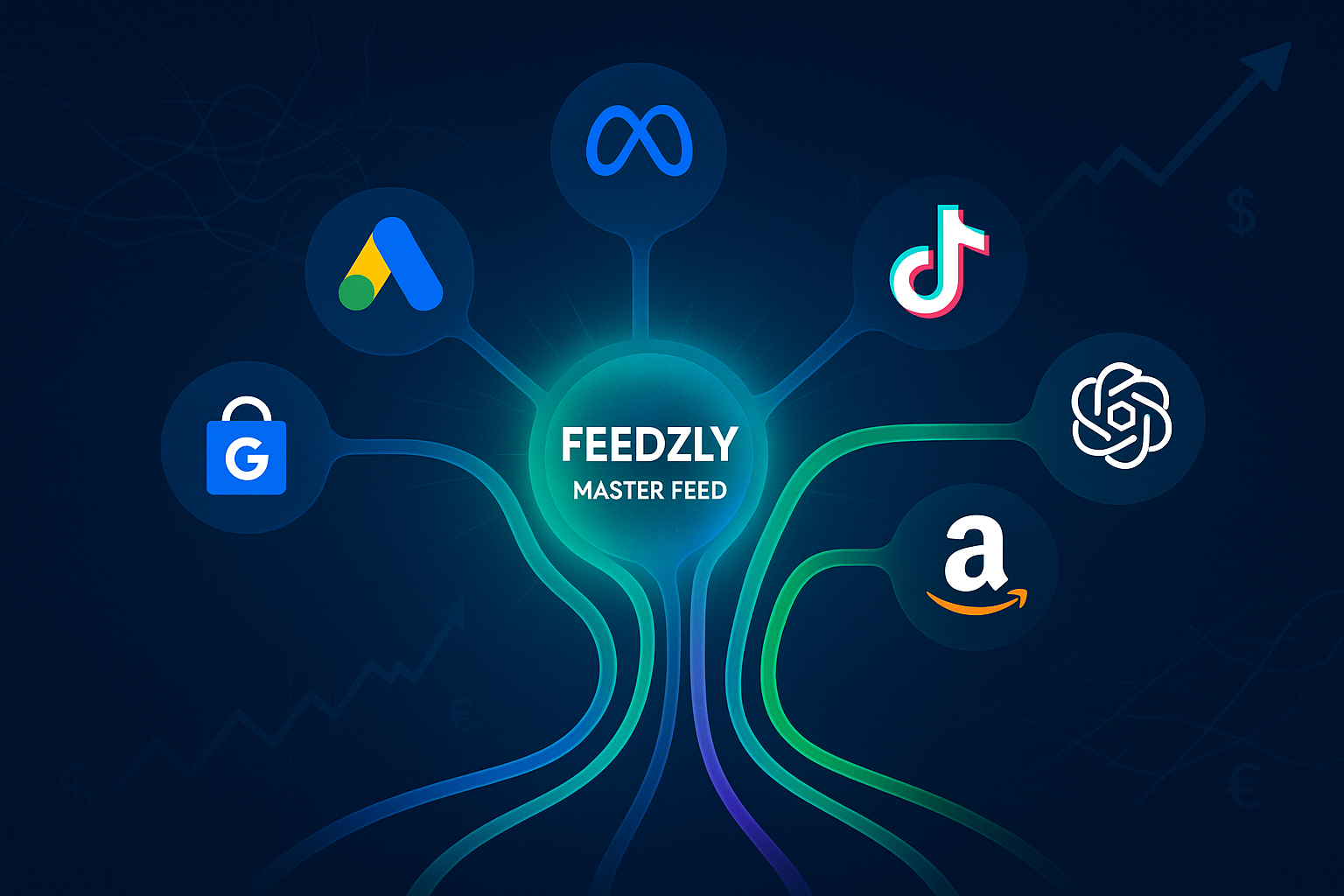Scaling an e-commerce brand isn’t just about launching more ads or testing new channels—it’s about whether your product data can keep up.
Relying solely on manual feed updates doesn’t scale. The repetitive work of tweaking thousands of attributes by hand drains resources and often leads to inconsistencies.
But manual control is still essential in the right places—like adjusting a key title, fine-tuning a high-value SKU, or testing messaging on a best-seller.
Feedzly was designed with this balance in mind: automation where it saves time, and precise manual overrides where human judgment makes the difference.
Most brands already know the basics: product descriptions, titles, and attributes matter. But the real challenge isn’t writing text—it’s transforming your entire product feed into a reliable, high-performance asset that works across every channel.
Why Poorly Managed Feeds Hold You Back
Feeds that aren’t guided by a clear, performance-driven strategy aren’t just tedious to manage—they’re costly:
- Lost revenue: Titles and attributes that aren’t informed by performance data mean missed clicks and weaker conversion rates.
- Customer trust erosion: Nearly 9 in 10 shoppers won’t buy from retailers with inaccurate data.
- High returns: Roughly 40% of e-commerce returns stem from poor product information.
- Fragmented performance: Variation in titles and descriptions is valuable when it’s intentional. But when copy is random or incomplete—lacking a strategic framework—it creates gaps in visibility across Shopping, SEO/GEO, and marketplaces.
For a 7- or 8-figure brand, these “hidden costs” can add up to millions in wasted opportunity each year.
Beyond Descriptions: Smarter Product Data Enrichment
Many conversations about AI in e-commerce start and end with generating product descriptions. Useful? Sure. But that’s surface-level.
Advanced enrichment means:
- Standardization & correction: Attributes stay consistent across your catalog, so platforms don’t reject or miscategorize products.
- Structured data mapping: Clean schema and taxonomies make your products easier for Google, Bing, and AI systems to interpret.
- Channel-aware adaptation: Titles and tags are optimized differently for Shopping vs. SEO vs. conversational AI.
- New attribute discovery: Identifying valuable signals like “sustainable,” “allergen-free,” or “vegan” from your existing product data to improve discoverability.
This is how a static feed turns into a growth engine.
Smarter Optimization with AI Agents
The next step isn’t replacing your team with AI—it’s equipping them with tools that make optimization scalable and performance-driven.
- Title & description generation that learns: Not just “grammatically correct” but tuned to actual sales and CTR data.
- Channel-specific adjustments: Shorter, keyword-rich titles for Shopping; richer context for SEO; compliant formats for marketplaces.
- Predictive modeling: Surfacing which attributes are most likely to influence conversions—before you publish.
- Iterative feedback loops: Performance data isn’t ignored after launch—it’s reviewed, analyzed, and used to shape the next round of optimizations.
This isn’t about eliminating manual work—it’s about using automation to handle repetitive, error-prone tasks while leaving you in control of the fine-tuning that really matters.
Multi-Channel Complexity, Simplified
Every channel has its own quirks:
- Google Shopping’s taxonomy and strict policy filters.
- SEO’s demand for rich schema and crawl-friendly data.
- Marketplaces like Amazon with rigid attribute rules.
- New discovery layers like AI Overviews and LLMs, which require machine-readable context.
Trying to manually manage all of this is unsustainable. Smarter feed management platforms—like Feedzly—bridge the gap. They keep your data consistent while adapting to the requirements of each channel, and still give you the option to step in where human oversight makes a difference.
Choosing the Right Partner
Plenty of tools promise “AI for feeds.” But here’s what really matters:
- Performance focus: Does the platform help you connect feed optimizations to measurable outcomes—like CTR, conversions, and ROAS—rather than just cosmetic text changes?
- Scalability: Can it reliably manage both small catalogs and 50,000+ SKUs without breaking down?
- E-commerce expertise: Was it designed by marketers who understand the realities of 7- and 8-figure accounts, or by generalist AI developers?
- Continuous improvement: Does it give you the ability to refine over time, using performance data to guide future adjustments?
Feedzly was built by performance marketers for performance marketers. Its goal isn’t to replace your strategy—it’s to make sure your feeds deliver the clean, channel-ready data those strategies depend on.
Preparing for What’s Next
The way products are discovered is changing. AI search, conversational commerce, and evolving ad formats are all powered by structured, high-quality data.
If your feeds aren’t ready today, you’ll be invisible tomorrow. Future-proofing isn’t optional—it’s the difference between owning visibility in the next era of search or getting buried by competitors who are already adapting.
The Next Step
If you’re already spending on Google Ads or testing PMax, your product data is either multiplying your results—or silently draining your budget. The fastest way to know which is happening is a feed performance audit.
That’s where we start: a clear look at how your current feeds are performing, where they’re holding you back, and what impact smarter optimization can unlock.
Don’t let repetitive updates or incomplete data dictate your growth curve. With the right balance of automation and manual control, your product feed becomes your most reliable growth asset.


